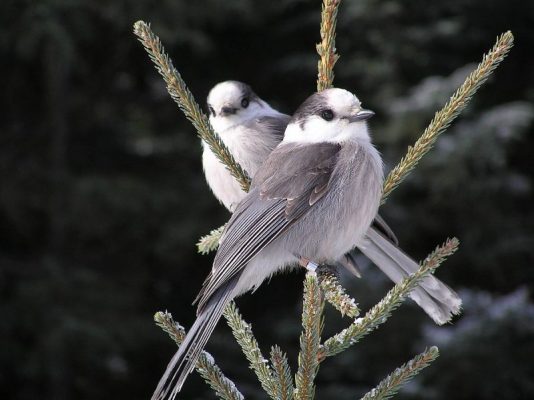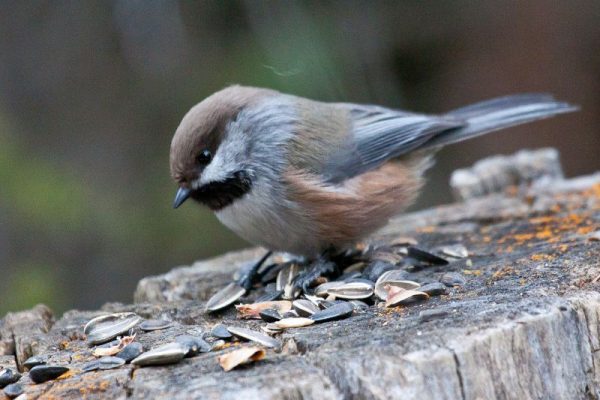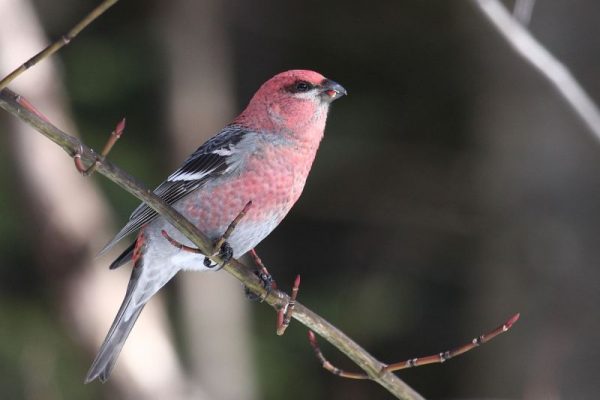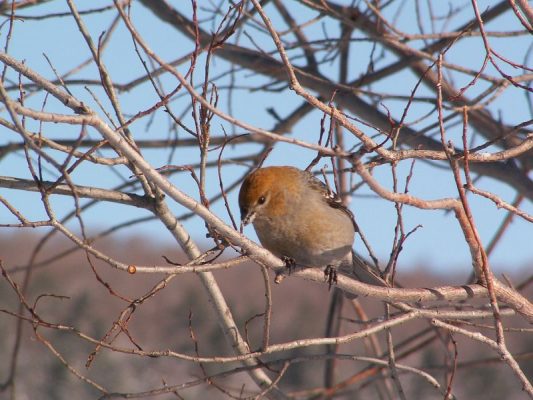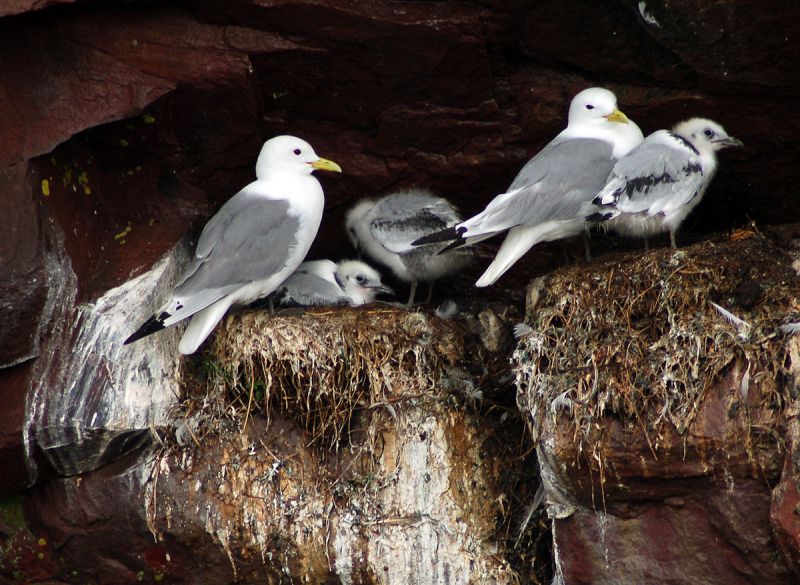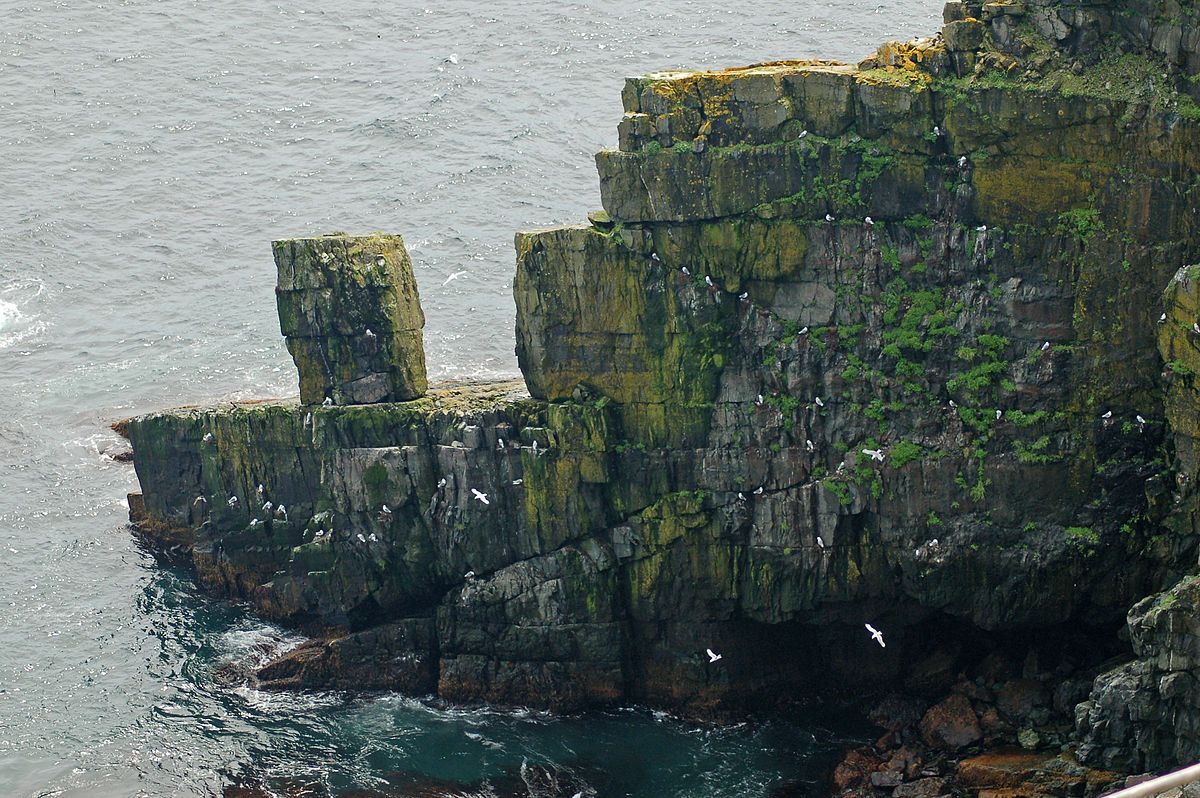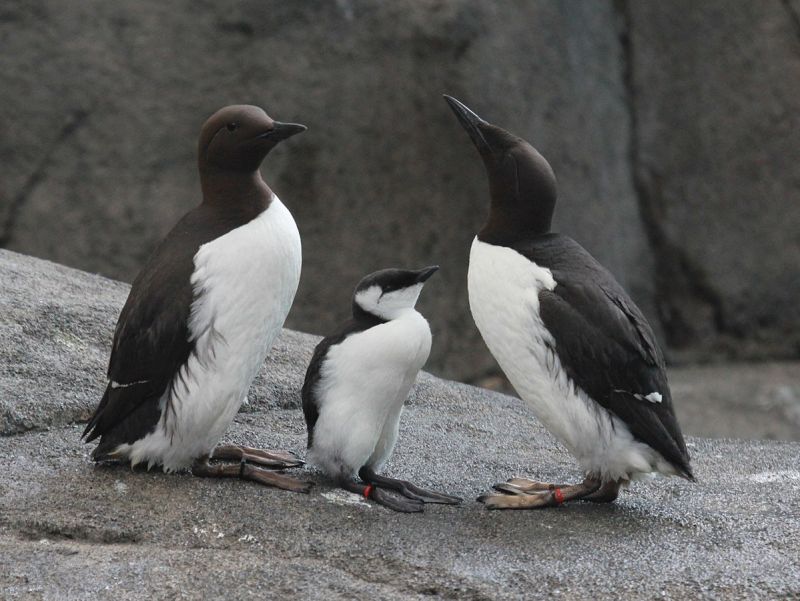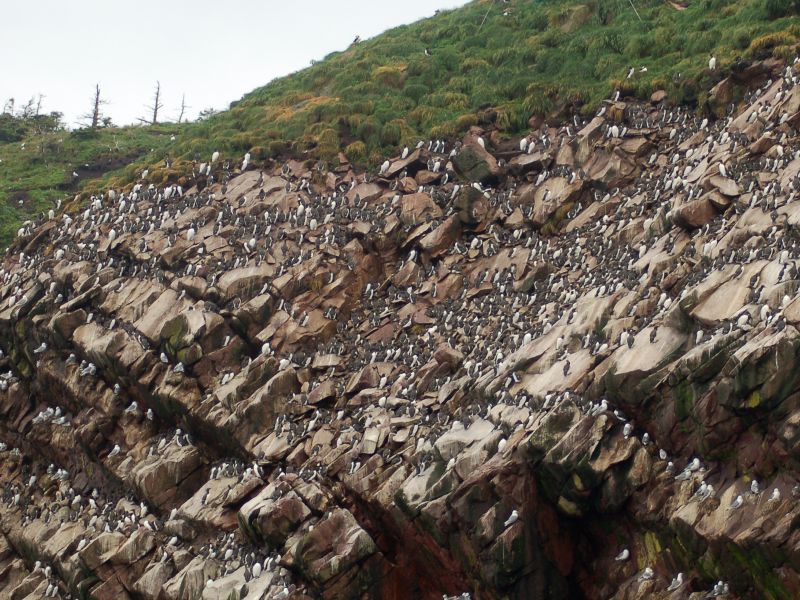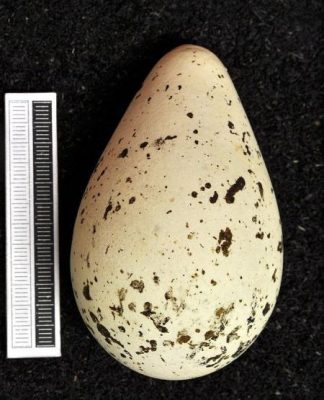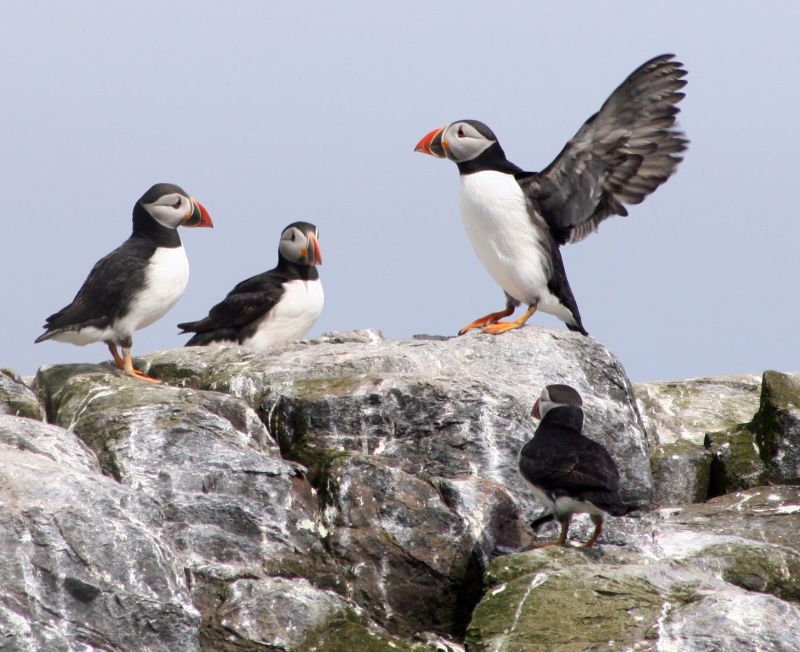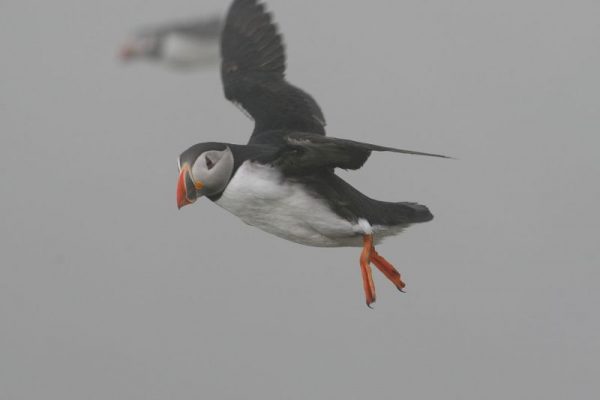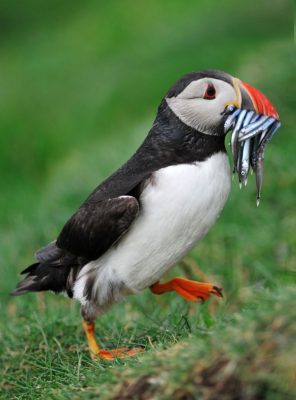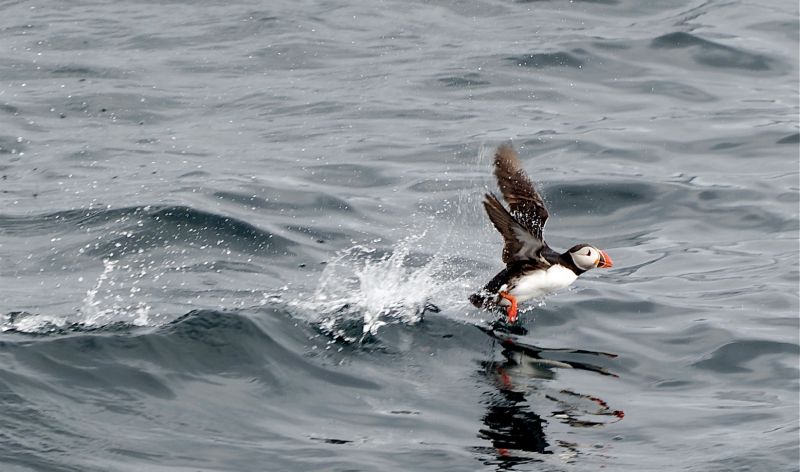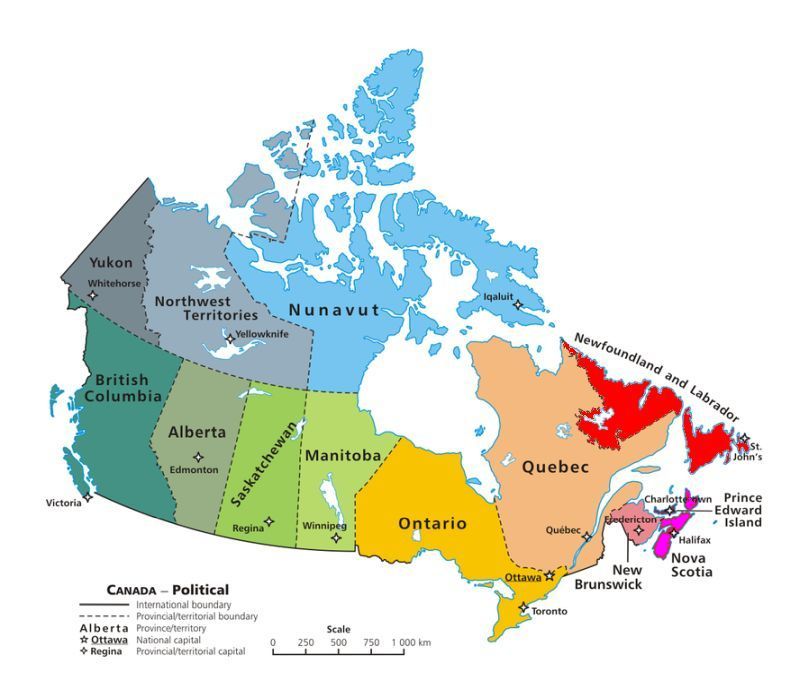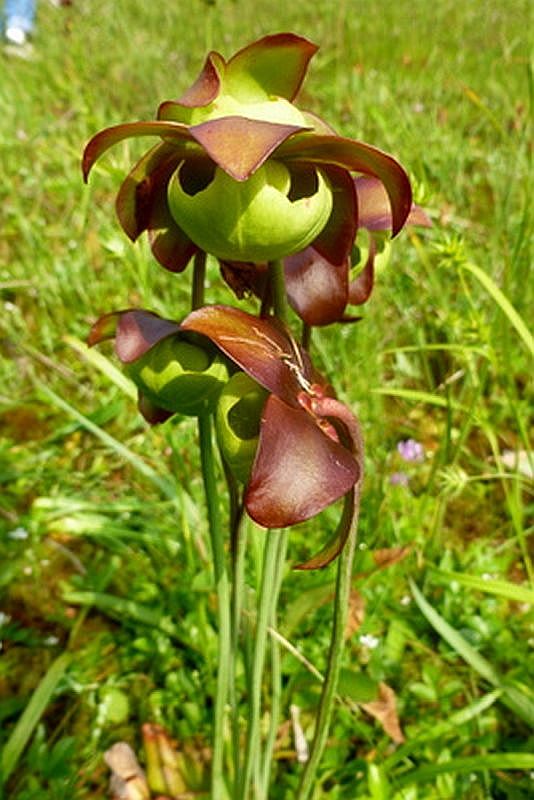
Just as we have State Flowers in the U.S., there are official flowers for each of the provinces of Canada. The Flower Emblem of Newfoundland & Labrador is the purple pitcher plant (Sarracenia purpurea).
Sarracenia purpurea is a carnivorous wetland plant whose leaves collect rainwater because they’re shaped like pitchers. The plant gets its nutrients from digested insects and spiders that drown in the water, unable to escape the leaves’ downward-facing hairs. Only about 1% of the insects that visit the pitchers become victims but it’s enough to sustain the plant.
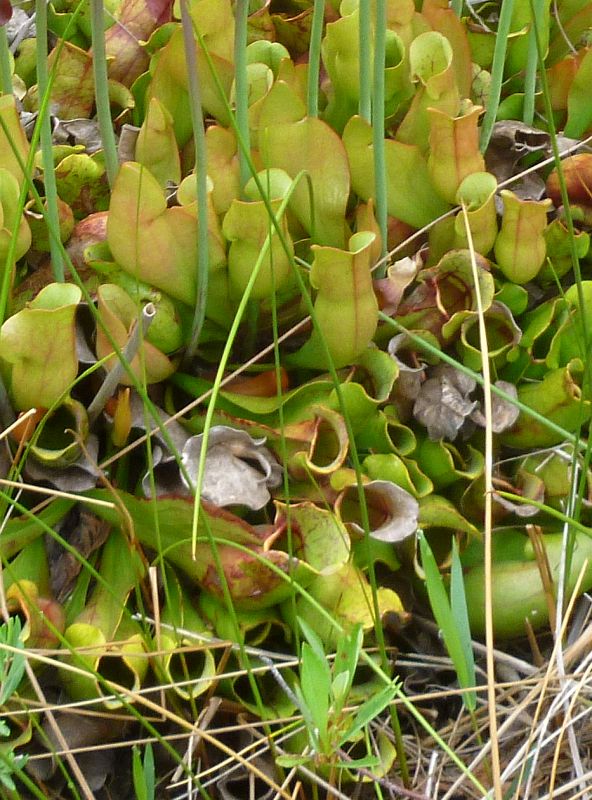
The prey is not digested by the plant but by larvae of two specialist insects that live in the pitchers’ rainwater: the pitcher plant mosquito (Wyeomyia smithii), which doesn’t bite us(*), and the pitcher plant midge (Metriocnemus knabi). The nutrients the larvae leave in the water nourish the plant.
Purple pitcher plants tend to grow clumps. When in bloom they stand 8-20 inches tall.
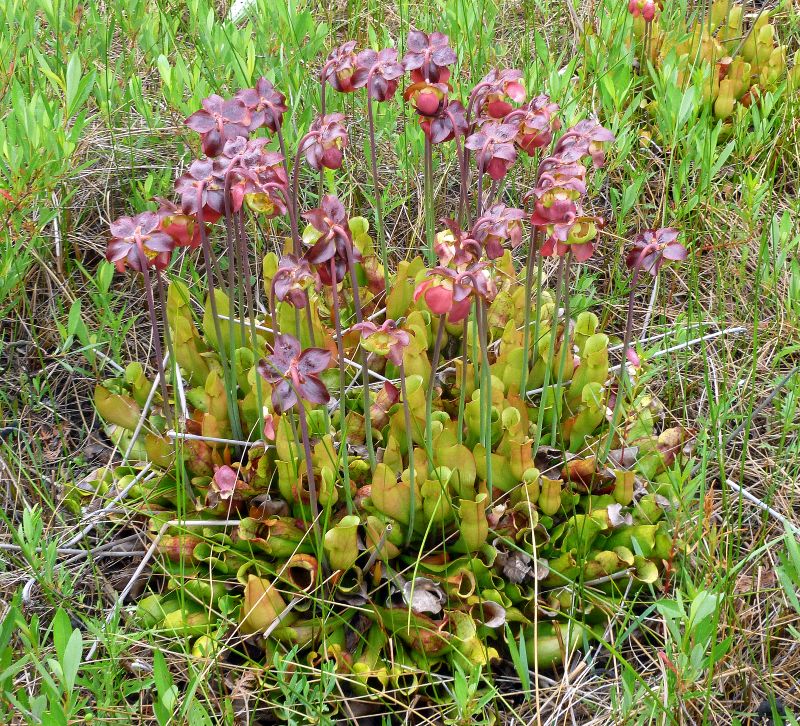
You’ll find them in bogs across Canada and as far south as Florida. Dianne Machesney photographed these in Pennsylvania and Ontario.
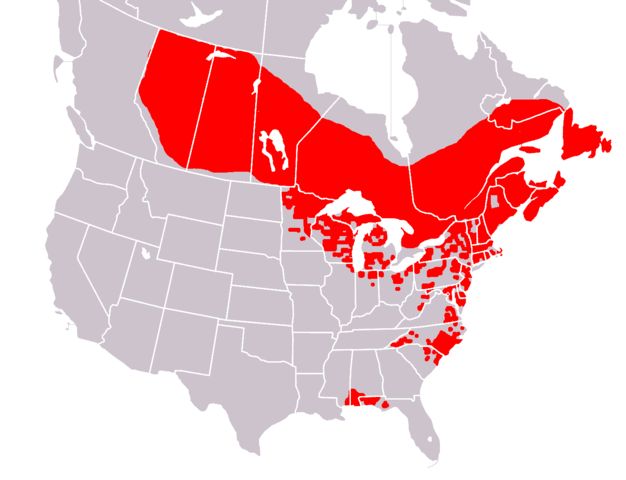
Visit Spruce Flats Bog to see them in the Laurel Highlands.
p.s. (*) About the pitcher plant mosquito: According to Wikipedia, Wyeomyia smithii neither bites nor approaches humans or livestock. However there are some populations in the Apalachicola National Forest (Florida) that have been observed taking blood meals after laying an initial egg batch. It is the only known mosquito to have both obligatory biting and non-biting populations in the same species.
(photos by Dianne Machesney, range map from Wikimedia Commons; click on the map image to see the original)
End of my birding trip to Newfoundland: Day 7, July 14, fly home

